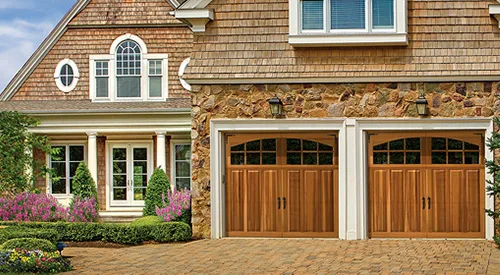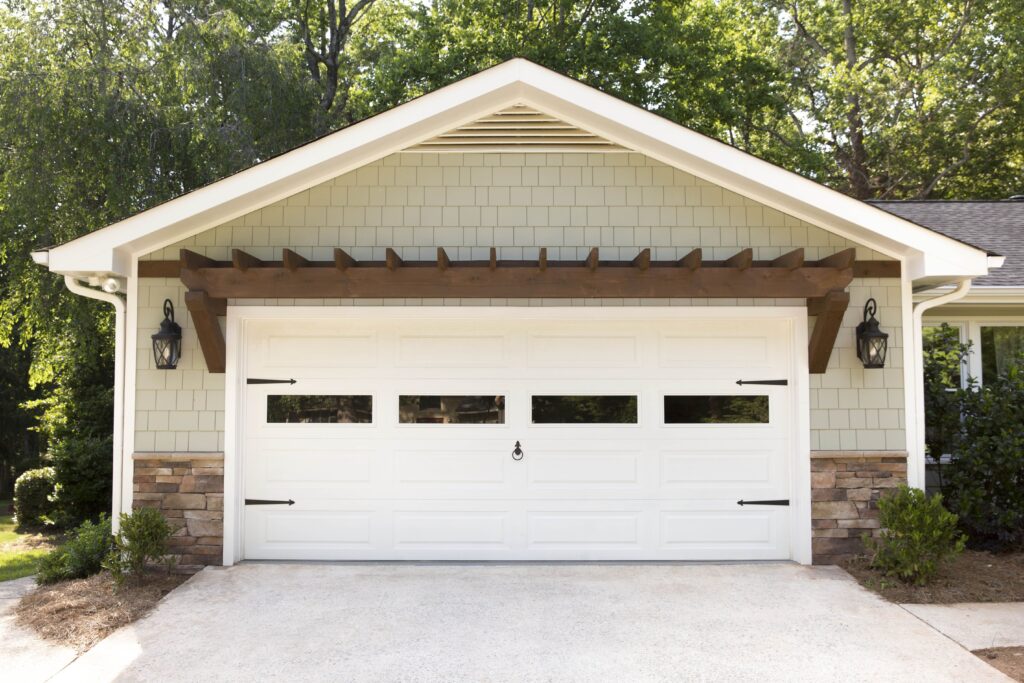As a diligent homeowner, ensuring the smooth operation of my garage door is a top priority. The garage door sensors, a crucial safety feature, play a pivotal role in preventing accidents and damage.

In this comprehensive guide from Garage Door Repair, I’ll share my experiences in dealing with common problems associated with garage door sensors and provide practical solutions to troubleshoot and fix these issues.
**1. Understanding the Role of Garage Door Sensors
Before delving into the common problems and solutions, it’s essential to grasp the significance of garage door sensors. These devices are typically installed near the bottom of each side of the garage door and work in tandem to detect obstructions in the door’s path. The primary functions of garage door sensors include:
**a. Safety Measures: Preventing Accidents
Garage door sensors act as a safety mechanism by detecting objects or individuals in the door’s path. If an obstruction is sensed while the door is closing, the sensors trigger an automatic reversal, preventing accidents or damage.
Why It Matters: Safety is paramount, and garage door sensors are designed to protect people, pets, and property from potential harm.
**b. Smooth Operation: Ensuring Proper Functionality
In addition to safety, garage door sensors contribute to the smooth operation of the door. They ensure that the door opens and closes seamlessly, without encountering obstacles along the way.
Why It Matters: Properly functioning sensors enhance the overall performance and longevity of the garage door system.
**2. Common Problems with Garage Door Sensors
Despite their crucial role, garage door sensors can encounter issues that affect their performance. Here are some common problems homeowners may face:
**a. Misalignment: Sensors Out of Position
Misalignment is a frequent issue where one or both sensors are not properly aligned. This can occur due to accidental bumps, vibrations, or gradual shifts over time.
Symptoms: The garage door may not close, or it may reverse immediately after attempting to close.
**b. Dirty or Obstructed Sensors: Hindered Detection
Dirt, dust, or obstructions on the sensor lenses can interfere with their ability to detect objects. This can lead to false readings and malfunctions.
Symptoms: The garage door may not close, or it may reverse unexpectedly even when no obstacles are present.
**c. Wiring Issues: Disconnected or Damaged Wires
Wiring problems, such as loose or damaged connections, can disrupt the communication between the sensors and the garage door opener.
Symptoms: The garage door may not respond to sensor signals, or it may exhibit erratic behavior during operation.
**d. Sunlight Interference: Direct Sunlight Affecting Sensors
Direct sunlight hitting the sensors can create false readings, causing the garage door to malfunction. This is particularly common during sunrise and sunset.
Symptoms: The garage door may not close, or it may reverse unexpectedly due to sunlight interference.
**e. Sensor Component Failure: Malfunctioning Parts
Over time, individual components within the sensors may wear out or fail. This can include issues with the emitter, receiver, or internal circuitry.
Symptoms: The garage door may exhibit inconsistent behavior, with sensor-related problems occurring intermittently.
**3. DIY Solutions for Garage Door Sensor Issues
Addressing garage door sensor issues promptly is crucial to maintaining the safety and functionality of the system. Here are practical DIY solutions to common problems:
**a. Misalignment: Realigning the Sensors
- Inspect Sensor Alignment: Check the alignment of both sensors. They should be facing each other directly and positioned at the same height.
- Adjust Sensor Positions: Gently adjust the sensors to align them properly. Use a level to ensure they are at the same height.
- Tighten Mounting Brackets: Secure the mounting brackets for both sensors to prevent accidental shifts. Use a screwdriver to tighten any loose screws.
**b. Dirty or Obstructed Sensors: Cleaning the Lenses
- Inspect Sensor Lenses: Examine the sensor lenses for dirt, dust, or obstructions. Clean any debris using a soft, dry cloth.
- Check Surrounding Area: Ensure that the area around the sensors is free of debris, spider webs, or any other obstructions that may interfere with their operation.
- Regular Maintenance: Establish a routine for cleaning the sensor lenses to prevent build-up. This can be done as part of regular garage door maintenance.
**c. Wiring Issues: Checking and Repairing Connections
- Inspect Wiring Connections: Examine the wiring connections on both sensors. Ensure that wires are securely connected to their respective terminals.
- Repair or Replace Damaged Wires: If any wires are damaged or frayed, carefully repair or replace them. Use electrical tape or wire connectors to secure the connections.
- Verify Power Source: Confirm that the sensors are receiving power. Check the power source, such as batteries or electrical wiring, and replace or repair as needed.
**d. Sunlight Interference: Creating Shade Solutions
- Install Sun Shields: Attach sun shields or hoods to the sensors to block direct sunlight. These accessories are designed to provide shade and prevent interference.
- Adjust Sensor Angles: Tilt the sensors slightly downward to minimize direct exposure to sunlight. Experiment with the angle to find the optimal position.
- Time Adjustments: If possible, schedule garage door operations during times when sunlight is less intense, reducing the likelihood of interference.
**e. Sensor Component Failure: Replacing Faulty Parts
- Test Individual Components: Identify the specific component causing the issue. Test the emitter, receiver, and internal circuitry individually.
- Order Replacement Parts: Order replacement parts for the malfunctioning components. Most manufacturers offer replacement sensor parts that can be easily installed.
- Professional Consultation: If the issue persists or if multiple components are failing, consider consulting a professional garage door technician for a thorough assessment and repair.
**4. Professional Assistance for Complex Issues
While many garage door sensor problems can be resolved through DIY solutions, certain issues may require professional expertise. Seeking assistance from a qualified garage door technician is advisable for:
**a. Advanced Troubleshooting:
If DIY solutions do not resolve the issue, a professional technician can perform advanced troubleshooting to identify complex problems.
**b. Sensor Replacement:
In cases where sensors are irreparably damaged or malfunctioning, a technician can recommend and install suitable replacements.
**c. Optimizing Sensor Placement:
Professionals can assess the garage layout and recommend optimal sensor placement to minimize interference and maximize safety.
**5. Preventive Measures for Long-Term Sensor Health
To ensure the continued functionality of garage door sensors, adopting preventive measures is key. Incorporate the following practices into your routine:
**a. Regular Cleaning:
Include sensor lens cleaning as part of your regular garage door maintenance routine to prevent build-up of dirt and debris.
**b. Secure Mounting:
Regularly check and tighten the mounting brackets to ensure the sensors remain securely in place.
**c. Weatherproofing:
Consider weatherproofing measures, such as adding protective covers or enclosures, to shield sensors from the elements.
**d. Routine Inspections:
Perform periodic inspections of the entire sensor system, including wiring and connections, to catch potential issues early.
**e. Professional Maintenance:
Schedule professional garage door maintenance at least once a year to ensure all components, including sensors, are in optimal condition.
Conclusion: Ensuring Sensor Reliability for a Safer Home
Dealing with garage door sensor issues is a manageable task with the right knowledge and approach. By understanding the common problems, implementing DIY solutions, seeking professional assistance when needed, and adopting preventive measures, homeowners can ensure the reliable operation of their garage door sensors.
Overall, based from Garage Door Repair and as a homeowner committed to the safety and efficiency of my home, troubleshooting garage door sensor issues has become an integral part of my routine maintenance. Regular attention to these essential safety features not only prevents potential accidents but also contributes to the longevity and optimal performance of the entire garage door system. Whether it’s a simple realignment or a more complex wiring issue, addressing sensor problems promptly ensures that my garage door operates seamlessly, providing peace of mind and security for my family and home.
Ramona Valley Garage Door & Gates
842 B St #6, Ramona, CA 92065, United States
760-970-8367









